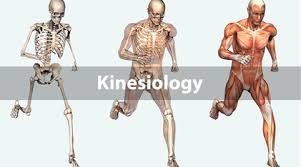1st Semester
I CREDIT HOURS 3 (2-1)
COURSE DESCRIPTION: This course covers the definition of kinesiology as well as its importance in physical therapy. It identifies the scope of kinesiology and studies its application. It covers the types of human motions as well as plane and relative axis of motion. It also explains the inter-relationship among kinematic variables and utilizes this knowledge to describe and analyze motion. This course additionally covers the classification of the joints and muscles along 22 their distinguishing characteristics; group action of muscles arthrokinematics and osteokinematics of human movement. COURSE OUTLINE:
INTRODUCTION TO KINESIOLOGY
Definition of kinesiology Definition of rehabilitation MECHANICS: Mechanical Principles and Mechanics of Position Force - force system – Description of units. Gravity: Center of gravity and line of gravity Level of gravity Equilibrium Fixation and Stabilization Mechanics of movement Axes /Plane Speed Velocity Acceleration Momentum Inertia Friction Lever - types - application Pulley - types - application Anatomical application of lever system and other pulley system application Angle of pull INTRODUCTION TO MOVEMENT: The body levers Forces applied to the body levers Types of movement and posture Patterns of movement Timing in movement Rhythm of movement The nervous control of movement STARTING POSITIONS: Definition Fundamental positions Standing Kneeling Sitting 23 Lying Hanging The pelvic tilt POSTURE: Inactive postures Active postures The postural mechanism The pattern of posture Principles of Re- Education Techniques of Re-Education Prevention of muscles wasting The initiation of muscular contraction Strengthening methods Abnormal postures MUSCLE STRENGTH AND MUSCLE ACTION: Types of Muscles contraction Muscles tone Physiological application to postural tone Group action of muscles Overview of muscle structure Types of muscle work Range of muscle work Group action of muscles Two joint muscle work Active and passive insufficiency Group movement of joints Muscular weakness and paralysis PRACTICAL TRAINING/ LAB WORK: Fundamentals of muscle testing Methods of muscle recording Basic muscle grading system Evaluation of posture Regional upper limb muscle testing as the region is covered in Anatomy I Practical demonstrations of muscles work and its ranges
Practical demonstrations of various fundamental positions and posture
analysis.
RECOMMENDED TEXT BOOKS:
1. Practical exercise therapy by Margaret Hollis
2. Brunnstrom’s Clinical Kinesiology
3. Clinical kinesiology and anatomy by Lynn S Lippert
24
4. Joint structure and function: a comprehensive analysis by: Pamela. K.
Levangie and Cynthia. C. Norkin.
5. Muscle function testing by: Cunningham and Daniel.
6. Human movement explain by kim jonas and karenbaker
7. The principles of exercise therapy by: M. Dena Gardiner, 4th Edition

- Teacher: Dr Summan Sajid